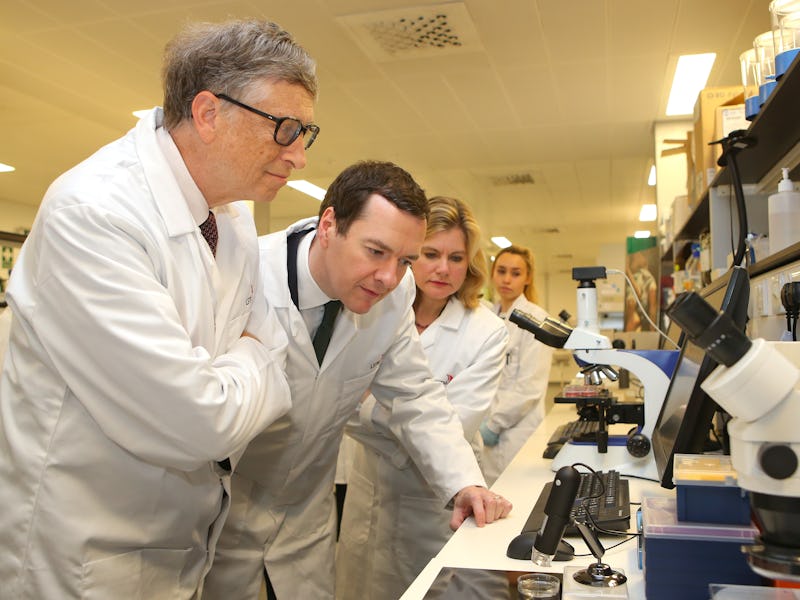Liquid Solar Energy May Arrive Sooner Than Bill Gates Thinks
A Harvard professor says the ambitious proposal to turn solar rays into fuel may not be that far off.

When recently asked which superpower he would give himself, Bill Gates said he’d change the world with cleaner, cheaper energy. If it’s a dorky ability to have, and not quite a superpower, it’s also an undeniably provident answer. The Microsoft founder is now publicly hashing out what this vision might look like — at his most speculative, we’ll borrow the best parts of gasoline and the best parts of solar energy to create a fuel source that’s altogether plant-like.
On Tuesday, Gates chatted with Marketplace’s David Brancaccio, about this idea that solar energy could one day be harnessed as liquid fuel:
Gates: Well, liquids, like gasoline, are magical. The energy density is over 10 times the best battery. And it sits there in a tank, the tanks are very inexpensive. You want twice as much energy, you buy a bigger tank. If you want to move it around, you put it in a truck or send it through a pipeline. It’s actually the best energy store we have today, is gasoline. If we can turn the sun into gasoline, it automatically is available all the time and it uses the infrastructure that’s already there.
Brancaccio: It’s gonna take some research, Bill. We’re not there yet.
Gates: No that one, we’re at the very early stage. It’s not even ready for private companies. But it’s very doable. Nature through photosynthesis does this, and we just want to do it in a more efficient way.
Gates is right about two things here: Stealing photosynthesis’ notebook looks like a great way to get closer to a solar-powered gasoline equivalent. And liquid fuel is pretty great — there’s a reason the automotive world picked gas 100 years ago when choosing between batteries and liquid. Liquid fuel was more efficient to store and cheaper to use — principles which locked in gasoline’s dominance over batteries — and still holds true today when comparing alternative energy sources.
“Liquid fuel has a lot of bang for its buck,” says Daniel Nocera, a renewable energy expert at Harvard University, to Inverse. In his opinion, where Gates might want to sharpen his statement is on just how far we are from liquid solar fuel: We may be closer than Bill Gates thinks.
Nocera knows quite a bit about liquid solar fuel, having invented what he calls an artificial leaf, which uses a catalyst to harness solar energy and split water into hydrogen and oxygen. If you feed the hydrogen to a genetically engineered organism — one that breathes in the hydrogen and breathes in carbon dioxide, Nocera says, you’ve created artificial photosynthesis.
In 2015, Nocera and his colleagues announced in the Proceedings of the National Academy of Sciences that they’d engineered the bacterium Ralstonia eutropha to bridge that very gap between leaf and photosynthesis, producing isopropanol — a liquid fuel.
To hear Nocera tell it, a few years of bioengeering research is beating nature at its 2.6-billion-year-old game: The best-growing plants store solar energy at 1 percent efficiency, and the scientists’ recent work — so new it’s not yet published — indicates they’ve achieved 10 times that. “We’re blowing the doors off of photosynthesis,” Nocera says.
But just because it can be done with bacteria in a lab doesn’t mean we’ll be loading up our Honda Civics with bionic isopropanol tomorrow:
A lot of the research is moving forward — it is all feasible,” Nocera says.
What gets complicated is when you make the translation to technology and investors get involved. There are some things, Nocera points out, science can’t solve.
Perhaps that’s where Gates — or someone like him, with the real-life superpowers of being a billionaire business magnate — will succeed.
(h/t Marketplace.)